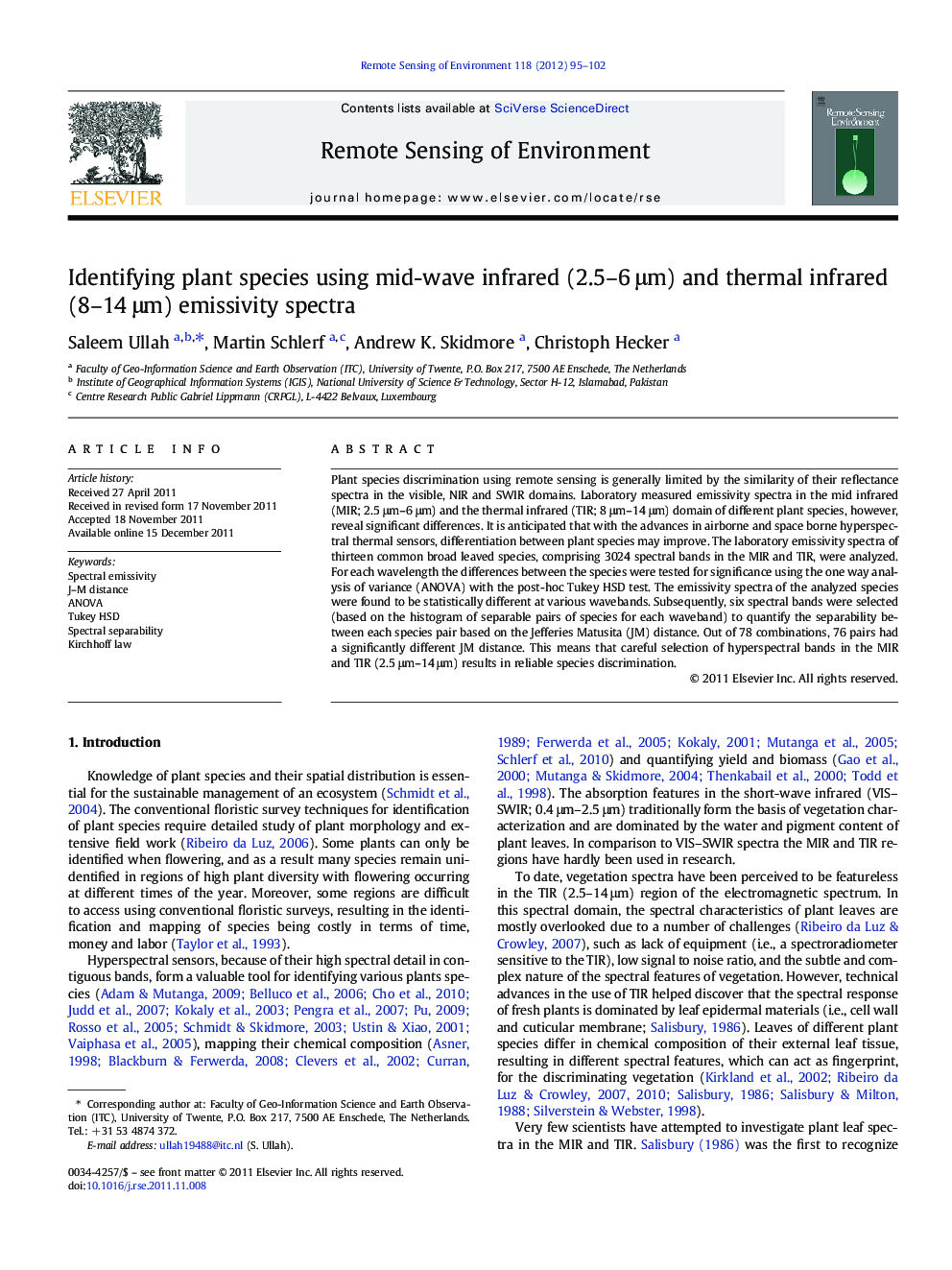| Article ID | Journal | Published Year | Pages | File Type |
|---|---|---|---|---|
| 4459329 | Remote Sensing of Environment | 2012 | 8 Pages |
Plant species discrimination using remote sensing is generally limited by the similarity of their reflectance spectra in the visible, NIR and SWIR domains. Laboratory measured emissivity spectra in the mid infrared (MIR; 2.5 μm–6 μm) and the thermal infrared (TIR; 8 μm–14 μm) domain of different plant species, however, reveal significant differences. It is anticipated that with the advances in airborne and space borne hyperspectral thermal sensors, differentiation between plant species may improve. The laboratory emissivity spectra of thirteen common broad leaved species, comprising 3024 spectral bands in the MIR and TIR, were analyzed. For each wavelength the differences between the species were tested for significance using the one way analysis of variance (ANOVA) with the post-hoc Tukey HSD test. The emissivity spectra of the analyzed species were found to be statistically different at various wavebands. Subsequently, six spectral bands were selected (based on the histogram of separable pairs of species for each waveband) to quantify the separability between each species pair based on the Jefferies Matusita (JM) distance. Out of 78 combinations, 76 pairs had a significantly different JM distance. This means that careful selection of hyperspectral bands in the MIR and TIR (2.5 μm–14 μm) results in reliable species discrimination.
► Thermal-infrared emissivity spectra have the potential for discerning plant species. ► Plant species have specific emissivity signatures and are statistically significant. ► Emissivity spectra contain sufficient information for discerning plant species. ► Emissivity spectra of plant species have the potential for floristic mapping. ► The possibility exists to extend this kind of work to the field and airborne level.
